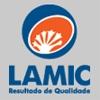Explore all the information on
Mycotoxins in poultry
Common mycotoxins associated with mycotoxicoses in poultry include aflatoxins, fumonisins, zearalenone, ochratoxins, and trichothecenes such as deoxynivalenol and T-2 toxins. Diagnosis requires detection and quantification of the specific mycotoxin. Treatment includes removal of the source of the mycotoxin and supportive care. Mold mitigation strategies can be used for prevention. Mycotoxicoses are diseases caused by the poisonous effects of the toxins produced by filamentous microfungi (ie, toxigenic molds). Hundreds of mycotoxins are known and can produce mild to severe toxic effects when they occur above levels of concern. The importance of mycotoxin problems in poultry is probably considerable yet difficult to measure. Chronic low levels of exposure to more than one type of mycotoxin appears to be a commonality, yet is less clinically evident.
Various skeletal disorders affect most fast growing meat birds and also laying hens. A number of factors are known to influence normal bone development and these are discussed in relation to fast growth rate. The incidence of leg problems is generally...
Comments : 2
Recommendations: 2
1 Department of Veterinary Medicine, Institute of Animal Nutrition, Freie Universität Berlin, 14195 Berlin, Germany 2 Clinic for Avian, Reptile and Fish Medicine, Department for Farm Animals and Veterinary Public Health, University of Veterinary Medicine, A-1210 Vienna, Austria 3 Division of Physiology and Toxicology, Institute...
Comments : 0
Recommendations: 0
Moulds produce different mycotoxins that have importance in farm animal nutrition because of their widespread occurrence and diversity (Leeson et al. 1995). Among various mycotoxins, those produced by Fusarium moulds, such as deoxynivalenol (DON) are often found in feed ingredients even at high concentrations in different parts of the world under different environmental conditions (Jelinek et al. 1989). The official recommendation in the...
Comments : 4
Recommendations: 0
Mycotoxins are toxic secondary metabolites produced by toxigenic strains of some genera of molds. In particular, mycotoxins are polyketones compounds resulting from condensation reactions produced under specific physical, chemical and biological conditions that occur when the reduction of the ketone groups in the biosynthesis of the fatty acids, carried out by the molds, is interrupted. These fatty acids are primary metabolites used by molds as an energy source....
Comments : 13
Recommendations: 0
INTRODUCTION FOWL CHOLERA Fowl cholera is a Bacteria disease caused by a gram-negative spore forming bacterium which can affect a wider range of hosts such as Turkeys, Ducks and chicken. This disease also known as Avian pasteurelosis can affect all age grade of chicken but older birds are more susceptible with a higher incidence recorded...
Comments : 0
Recommendations: 0
ABSTRACT Mycotoxins are contaminants of many cereals and derivatives used as ingredients in poultry diets. They are considered secondary metabolites produced by fungi that develop well in tropical climates. When they are present in moderate to high concentrations in the diet, it might result in death, and when used in low doses, it may compromise production indexes, such as decrease in weight gain, poor feed conversion, decline...
Comments : 5
Recommendations: 0
Introduction Mycotoxins are substances produced by molds, that have a toxic effect on animals, decreasing their performance and even causing death. Molds are broadly distributed throughout the world, also contaminating feed grains. In order to reduce the negative effects of mycotoxins on animals, mycotoxin-adsorbing feed additives are used. Such products have different neutralization...
Comments : 5
Recommendations: 0
Poultry farming in India was mostly a backyard venture till 1960’s, and it is believed that the Indian poultry industry is 5000 years old. Since last 4 decades it began to witness remarkable growth from backyard to poultry industry. India is the 5th largest producer of egg and 9th largest producer of poultry meat . The broiler industry is well dominated in southern states in our country and contributes 60-70% of total output. The layer industry once again is represented more in...
Comments : 5
Recommendations: 0
Management of broiler breeder in poultry industry in India strongly emphasizes the importance of cost control at all levels. Usually in broiler breeder operation, the costs involved is the production of the hatching egg or the day old chick and are important as seen in the perspective of the cost per kg of live bird. In field condition, the greatest attention is usually given to the performance of broiler breeders, and most of the research in the field is focused...
Comments : 1
Recommendations: 0
Poultry, swine and dairy producers admit today that the presence of mycotoxins in the feed is one of the main factors affecting animal production. As a result of the higher prices of feed ingredients, their quality is getting worse, with some grains showing higher levels of mycotoxins. High contamination levels can also be found in distillers grains, an ingredient in increasing supply, originated from the use of corn in ethanol production in the US. Some producers consider that...
Comments : 5
Recommendations: 0
Introduction The presence of mycotoxins in feed grains is rious for both broilers and broiler performance. In order to reduce the negative effects of mycotoxins in animals, mycotoxin-adsorbing additives with different neutralization abilities are used. The purpose of this study was to determine the in vitro aflatoxin-adsorbing ability of T5X SD in broilers. ...
Comments : 0
Recommendations: 0
Introduction Anti-nutritional factors depress nutrient quality of the feed and hence the health and performance of poultry. Mycotoxins are one such anti-nutritional factor present in feed ingredients and complete feed. They are the secondary toxic metabolites produced by various genera of fungi. Fungi that produce mycotoxins of major significance in the poultry industry include Aspergillus, Fusarium and Penicillium. Though hundreds of mycotoxins have been implicated in animal...
Comments : 1
Recommendations: 1
1.- HT-2 toxin and trichotecene mycotoxins
The HT-2 toxin belongs to the group A of the trichotecene toxins. These mycotoxins are produced by molds of the genus Fusarium , such as, Fusarium tricinctum, F.nivale, F.roseum, F.graminearum, F.solani, F.oxysporum, F.lateritium, F.sporotrichioides, F.rigidiusculum, F.episphaeria and F.poae . Other molds also can produce trichotecene...
Comments : 0
Recommendations: 0
Days ago, the XXIII edition of the World Poultry Congress was held in Queensland (Australia), organized by the World Poultry Science Association (WPSA), with the main objective of promoting researching and scientific and technical exchange among top specialists and professionals of the poultry industry, and currently being one of the most active and renowned organizations globally. At this time, it counts on more than 7,000 members, all of them technicians, professionals and...
Comments : 0
Recommendations: 0


How Does Coccidiosis Affect Poultry Farming, and What Strategies Can Mitigate Its Impact?
Suggested link
This work was conduced to determine the performance parameters of initial-phase turkey poults fed 7 different doses of aflatoxins in the diet. Three hundred thirty-six 1-d-old male turkey poults were used in this research. Turkeys were divided into 7 treatments according to aflatoxin doses (T1 = control; T2 = 20 ppb aflatoxins; T3 = 50 ppb; T4 = 100 ppb; T5 = 200 ppb; T6 = 500 ppb; T7 = 1,000 ppb). Birds were killed in 2 periods: half of them after 21 d of experiment and the remaining birds...
Comments : 0
Recommendations: 0
Mycotoxins are fungal metabolites that can reduce performance and alter metabolism of livestock and poultry (Wannemacher et al., 1991). The pathological states arising from the consumption of feeds contaminated with mycotoxins are termed mycotoxicoses. Mycotoxins can be formed in the field preharvest and may continue to be formed under suboptimal storage conditions postharvest. High moisture content often predisposes feedstuffs to fungal growth and mycotoxin...
Comments : 0
Recommendations: 0
The immune system is the defense mechanism of the body of which key organs are thymus, bursa, liver and spleen. In poultry bursa of Fabricius (located in the lower back of the chicken) and thymus (in the neck) are key sites for immune responses and hence termed as chief immune organs. It is common...
Comments : 1
Recommendations: 0








.jpg&w=3840&q=75)


.jpg&w=3840&q=75)


.jpg&w=3840&q=75)










